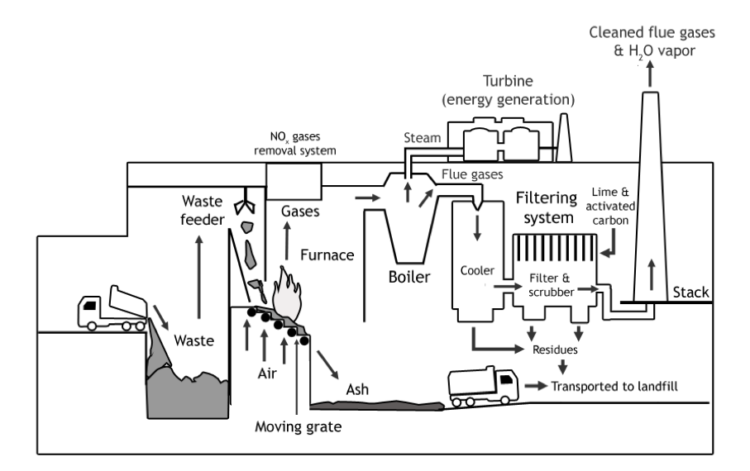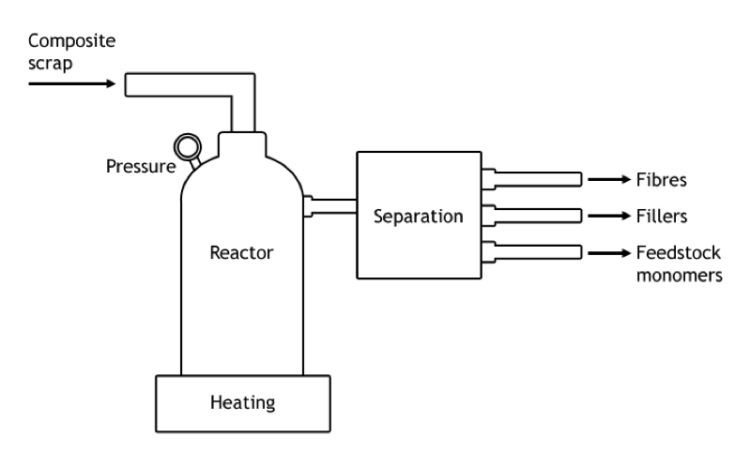Recycling of composite materials
Sep 2018 - ongoing
Research into the current and future processes for recycling composite materials.
By Alma van Oudheusden
Composite materials are materials which are constructed of two or more materials to be able to benefit from a combination of material properties. One material acts as binder, also known as the matrix, which surrounds and binds fragments of the other material, the reinforcement (Royal Society of Chemistry, 2015), which can be a fibre or particle. Sometimes, filler materials are added as well for additional benefits, such as cost reduction or fire retardance. Composite materials are widely used in automotive, aerospace and renewable energy industries, as these materials have a higher strength, lower weight and less maintenance compared to conventional materials, as well as a long lifespan (Yang et al., 2012).
For most applications the type and proportion of resin, reinforcement and filler are tailored to the particular end use, which means that there are many types of composites (Pickering, 2005). Classifying composite materials can be done in two ways, namely structure (Figure 1) and material use (Figure 2). The structure describes the way in which a composite is build up, whereas the material use describes which materials are used for both the matrix and the fibre.
This report will focus on fibre-reinforced and structural polymer composites, using a thermoset or thermoplastic matrix with glass or carbon fibres.

